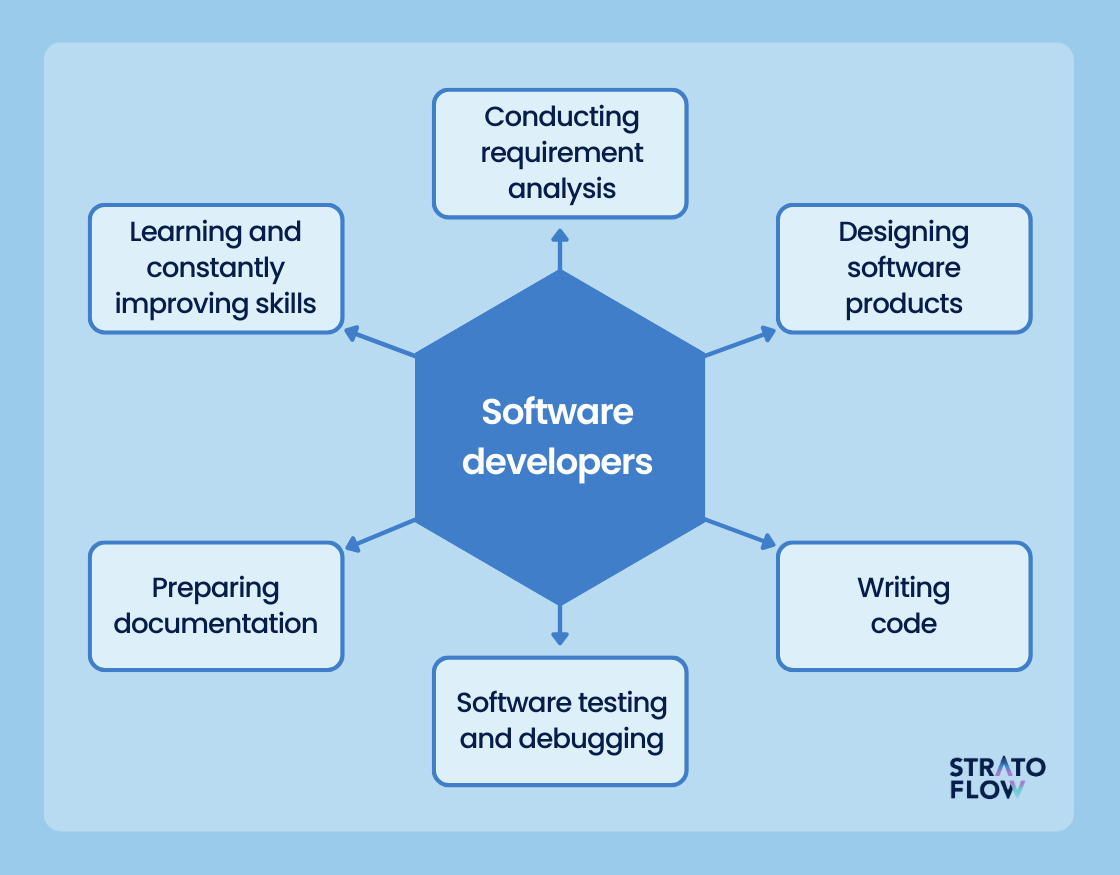Committed Developers vs. In-House Teams: Which Is Right for You?
The decision in between making use of specialized designers and keeping an in-house team is a substantial one that can impact the trajectory of your jobs and overall service approach. Conversely, in-house teams add to a natural business society and a nuanced understanding of lasting goals.
Recognizing Devoted Developers
The expanding demand for specialized skills in the tech market has caused the development of dedicated programmers as a practical remedy for numerous companies. These experts are typically acquired on a project basis, enabling firms to take advantage of specific know-how without the long-term commitment linked with full-time hires. Devoted developers are commonly embedded within a client's group, providing adaptability and scalability to satisfy task demands.
This version enables organizations to access a global skill swimming pool, which is specifically beneficial in a quickly evolving technological landscape. Devoted programmers can be sourced from various geographical places, making certain that companies can find the ideal capability at competitive rates. They usually bring a wealth of experience and knowledge, having dealt with diverse jobs throughout various sectors.
Furthermore, specialized designers can concentrate specifically on the jobs handy, enhancing productivity and efficiency. They are equipped to integrate perfectly into existing workflows, working together carefully with in-house teams to achieve project goals. This approach not just minimizes the worry of employment and training yet likewise enables organizations to remain active, adjusting swiftly to altering market demands and technological advancements.
Advantages of In-House Teams

Moreover, in-house teams often tend to have a deeper understanding of the business's goal, values, and objectives. This alignment can improve employee interaction and inspiration, as employee really feel more linked to their job and the organization's success. Furthermore, having a committed in-house team permits far better alignment of objectives and techniques, as these participants are consistently concentrated on the business's concerns.
Internal groups also help with quicker decision-making processes, as they can respond a lot more swiftly to difficulties and adjustments. The established relationships and experience with business procedures enable structured operations and lowered miscommunication. Ultimately, the combination of a cohesive culture, alignment with organizational goals, and efficient communication makes internal groups an important possession for lots of companies, specifically those aiming to cultivate long-lasting growth and development.
Cost Considerations
When evaluating price factors to consider, both committed programmers and internal teams present distinct financial effects for companies. Engaging devoted developers generally involves a pay-per-project or per hour rate model, which can be affordable for businesses with fluctuating task demands. This method permits adaptability in scaling resources up or down, guaranteeing that companies just pay for the solutions they require.
On the other hand, internal teams require taken care of expenses, consisting of incomes, advantages, and overhead costs such as office and devices. While this model supplies better control and instant schedule of resources, it may lead to greater long-term expenses, particularly if the work does not validate a permanent you can try here personnel.
Additionally, companies must take into consideration the covert prices associated with recruitment and training of internal staff members, which can further strain spending plans. Sometimes, the time and sources invested in taking care of an in-house team can diminish the company's core organization objectives.

Project Monitoring and Flexibility
Project monitoring and versatility are vital variables that influence the selection between internal teams and specialized developers. Devoted teams commonly have established procedures for managing jobs effectively, leveraging certain methodologies like Agile or Scrum, which assist in iterative progression and flexibility.

Eventually, the choice in between specialized designers and my sources in-house groups hinges on the desired level of versatility and the particular job management needs. Business should assess their functional dynamics, project intricacy, and resource schedule to identify which alternative lines up best with their calculated objectives.
Making the Right Selection
Choosing the appropriate advancement approach-- specialized developers or internal teams-- needs a careful evaluation of numerous aspects that straighten with a business's critical goals. software development partner. Initially, think about the nature of the task. If it requires specialized abilities or a quick scale-up, devoted programmers may be preferable. Alternatively, in-house teams can offer far better connection and combination with existing employees.
Next, examine your budget plan. Devoted programmers frequently provide an economical remedy for temporary tasks, while internal teams may incur greater lasting costs because of incomes, benefits, and overhead prices. Analyze the level of control and collaboration desired; in-house groups commonly cultivate more powerful communication and alignment with company society.
Furthermore, think about the time framework. If prompt outcomes are needed, dedicated developers can be onboarded swiftly, whereas constructing an in-house team requires time for employment and training. Consider the long-lasting vision of your company. Spending in an in-house group may produce much better returns over time if continuous growth is crucial. Ultimately, the choice depends upon a detailed evaluation of these factors, making sure alignment with your firm's functional needs and general objectives.
Verdict
In verdict, the choice in between committed programmers and in-house groups hinges on project needs and organizational objectives. Alternatively, internal teams grow a cohesive society and deeper placement with lasting goals.
The decision between utilizing committed designers and maintaining an internal team is a significant one that can influence the trajectory of your projects and general company strategy.Task monitoring and flexibility are critical aspects that influence the selection between committed designers and in-house groups. offshore software development.In contrast, internal teams may succeed in maintaining Find Out More a constant task management structure due to their knowledge with the organization's culture and lasting objectives. Dedicated designers often provide a cost-efficient solution for short-term jobs, while internal groups may incur higher long-lasting expenditures due to wages, benefits, and overhead costs.In final thought, the choice in between internal groups and committed developers hinges on project requirements and organizational goals